Cookbook #203: Natural Cooking, Barbara Farr, Potpourri Press, Greensboro, NC, 1971.
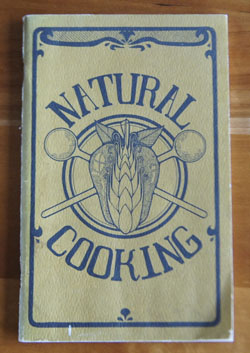 The title page of this booklet is marked “$1.50” in very neat handwriting. My guess is that I bought it in a Boulder bookstore, way back when. Today I could buy it for $3.95 on Amazon.
The title page of this booklet is marked “$1.50” in very neat handwriting. My guess is that I bought it in a Boulder bookstore, way back when. Today I could buy it for $3.95 on Amazon.
The Owl & Company Bookshop comments that Natural Cooking is a “scarce and relatively early natural food cook-book”, referring to the natural food movement that the “hippie” generation took on as its own. Barbara Farr’s Natural Cooking defines natural foods as minimally processed foods, for example, whole grains instead of white flour, foods grown without pesticides, and produce brought from farm to table as soon as possible.
There was a time when all grains and produce were grown without synthetic pesticides, and produce had to be eaten (or home-canned) quickly or it would spoil. In the early twentieth century the “food industry” grew fast, offering food processed to lengthen its shelf life. Home cooks were able to buy canned and packaged foods, and wanted more. Chemists in the same era discovered and manufactured pesticides for greater crop yield, as well as food preservatives (additives) to give processed foods a longer shelf life. Home cooks of the 40s to 50s latched on to these convenient products.
Then came the “hippie” generation, a sub-set of the “baby boom” generation. Many hippies, children of the 1940s to the 1960s, wanted to go back to nature, and eliminate pesticides and food additives from their foods, as well as eat whole grains and freshly harvested foods (preferrably home grown). (Joni Mitchell: “Give me spots on my apples but throw away the DDT”.)
The hippie generation did not invent the movement for all natural foods. My edition of the Boston Cooking-School Cook Book, published in 1906, recommends whole grains and a balanced diet including fruits and vegetables.
I found Natural Cooking in the bibliography of this book, Secret Ingredients: Race, Gender, and Class at the Dinner Table, by S. Inness. It’s in the chapter “Recipes for Revolution“.
 The trend for whole grains continues today (2017). I like them because they have much more flavor than plain white bread, or white rice. Whole grains have a low glycemic index, touted in The Glucose Revolution Pocket Guide to Losing Weight as being important both for dieters and diabetics. Today, I see “low glycemic index” bars and foods advertised for fitness affectionados and dieters alike.
The trend for whole grains continues today (2017). I like them because they have much more flavor than plain white bread, or white rice. Whole grains have a low glycemic index, touted in The Glucose Revolution Pocket Guide to Losing Weight as being important both for dieters and diabetics. Today, I see “low glycemic index” bars and foods advertised for fitness affectionados and dieters alike.
I sit down with Natural Cooking and slowly page through. On page 4, “Introduction”, is the quote from the inset (above), “A steaming bowl of soup, a ripe tomato still warm from the heat of the sun, and a loaf of crusty whole-grain bread; all of these are natural foods. On the other hand, a T.V. dinner is unnatural in its concept, unsatisfying in its flavor and unbeautiful to behold!”. I scanned in page 5, below, because it exemplifies the tone of Barbara Farr’s book:

Here is an excerpt from page 6, Barbara Farr’s take on food faddists:

Even though this is a small collection of recipes, it is quite varied. The recipes in this book are not vegetarian and some include cuts of meat that we less commonly use today, such as oxtails, kidneys, liver, and smoked tongue. Hummus, eggplant, stuffed grape leaves, gazpacho, quiche, and bean soups show the variety of choices. I easily find three recipes I’d like to try: Swedish Limpa, a yeast bread made with beer and a larger proportion of rye flour; Turkish Swedish Meatballs made with lots of yogurt; and Apple Krisp, with raw sugar (Turbinado sugar, like I use for Creme Brulee), honey, apples, and wheat germ.
An aside: I like Barbara Farr’s paragraph on “Sweets”:

For this blog, I decide to make the Turkish Swedish Meatballs.
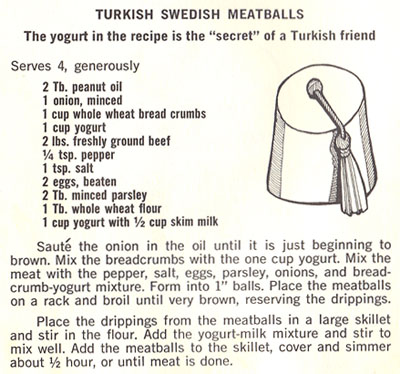 I cut the recipe in half for the two of us. I found the meatballs too sloppy as I formed them, so I added more breadcrumbs. I found it very hard to stir the whole wheat flour into the drippings, so next time I’d use white (AP) flour. (Not worth the trouble using whole grains for this small amount of flour, if it doesn’t work.) Below is my version of this recipe.
I cut the recipe in half for the two of us. I found the meatballs too sloppy as I formed them, so I added more breadcrumbs. I found it very hard to stir the whole wheat flour into the drippings, so next time I’d use white (AP) flour. (Not worth the trouble using whole grains for this small amount of flour, if it doesn’t work.) Below is my version of this recipe.
Turkish Swedish Meatballs
serves 2-3
- 1 pound freshly ground beef; I used 90% lean beef from Whole Foods
- 1/2 onion, chopped fine
- 3/4 cup whole wheat bread crumbs (I used my homemade whole wheat bread)
- 1/2 cup yogurt (I used organic, full fat plain yogurt)
- pepper to taste
- 1/2 teaspoon salt
- 1 egg, beaten
- 1 tablespoon minced fresh parsley
- 1 tablespoon AP flour
- 1/4 cup milk
- 1/2 cup yogurt
Saute the onion in a little oil until it is just beginning to brown. Mix the breadcrumbs with the 1/2 cup yogurt. Mix the meat with the pepper, salt, parsley, onions; add the bread-crumb-yogurt mixture. Form into 1-inch balls. They will not form easily, as this mixture is pretty, well, sloppy:
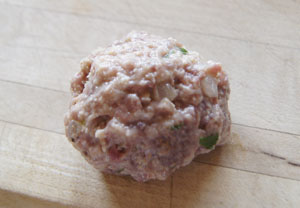 Set the meatballs to rest on a plate or breadboard. Heat your oven to broil. Find a clean broiler pan, or use a rack set over a pan to catch the drippings. Lightly oil the broiler pan or the rack, then place the meatballs on it. Broil the meatballs until they are very brown. This took me 5-10 minutes; I rotated the pan often and turned the oven to low-broil about halfway through.
Set the meatballs to rest on a plate or breadboard. Heat your oven to broil. Find a clean broiler pan, or use a rack set over a pan to catch the drippings. Lightly oil the broiler pan or the rack, then place the meatballs on it. Broil the meatballs until they are very brown. This took me 5-10 minutes; I rotated the pan often and turned the oven to low-broil about halfway through.
Take the pan out of the oven and let it cool. Reserve any drippings for the sauce.
Transfer the drippings to a large frying pan pan and stir in the flour (I had so few drippings that I added a bit of olive oil too). Add the milk and stir until smooth. Add the 1/2 cup yogurt. Add the meatballs to the skillet, mix it all together carefully (the meatballs are delicate), then cover and simmer about 1/2 hour, or until the meat is done.
Serve over noodles, rice, or mashed potatoes, or maybe a grain like farro, freekeh, bulgur, or cracked wheat. I used whole wheat linguine.
 I was surprised at how well these went over! The first comment from my dining-partner was “ummmm, these are good!” I too liked them. Full of flavor and nice and moist.
I was surprised at how well these went over! The first comment from my dining-partner was “ummmm, these are good!” I too liked them. Full of flavor and nice and moist.
Next time I might use a frying pan that goes from oven to stove top. Using the broiler was kind of useless, since very little fat came off these meatballs. But the step of browning under a broiler was nice, because it got these delicate meatballs nice and brown without causing them to fall apart. It kept the moisture of the meatballs inside, and after a good simmer in the yogurt sauce, they were absolutely delicious.
I will definitely keep this cookbook!

 The New Pillsbury Family Cookbook is one of my three most-used reference cookbooks, alongside
The New Pillsbury Family Cookbook is one of my three most-used reference cookbooks, alongside 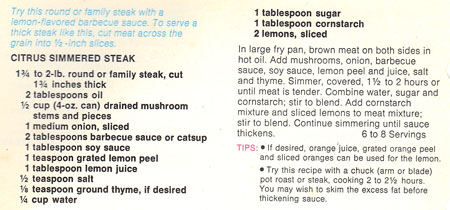 The poultry and game chapter shows signs of “well-use”, but I haven’t marked any recipes. Today I do, though! “Golden Oven-Fried Chicken” is coated with cornflakes, almonds, and Parmesan cheese. Now, I’ve made cornflake-coated chicken for years, but almonds and cheese? No. I will make this recipe soon. (271)
The poultry and game chapter shows signs of “well-use”, but I haven’t marked any recipes. Today I do, though! “Golden Oven-Fried Chicken” is coated with cornflakes, almonds, and Parmesan cheese. Now, I’ve made cornflake-coated chicken for years, but almonds and cheese? No. I will make this recipe soon. (271)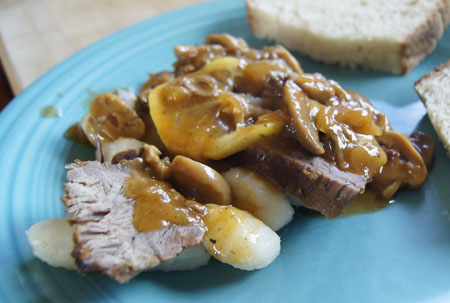 This was tasty and flavorful I left most of the lemons off my husband’s serving because I wasn’t sure he’d like them. The Swiss/round steak was a bit like, well, like “round steak”. I always find this cut of meat rather chewy and flavorless, no matter how I cook it. With the sauce and the long cooking, though, it did make a good week night meal. I scraped the sauce off the leftover meat, sliced it thinly, and it made a yummy sandwich with tomatoes, lettuce, and ketchup. The last bit of leftover meat went into tacos.
This was tasty and flavorful I left most of the lemons off my husband’s serving because I wasn’t sure he’d like them. The Swiss/round steak was a bit like, well, like “round steak”. I always find this cut of meat rather chewy and flavorless, no matter how I cook it. With the sauce and the long cooking, though, it did make a good week night meal. I scraped the sauce off the leftover meat, sliced it thinly, and it made a yummy sandwich with tomatoes, lettuce, and ketchup. The last bit of leftover meat went into tacos. Why did I put this book in my “cookbook” database? There is not a single recipe in it, except ones for making play dough for kids. Well, the book’s in my database, so I gotta cover it!
Why did I put this book in my “cookbook” database? There is not a single recipe in it, except ones for making play dough for kids. Well, the book’s in my database, so I gotta cover it!
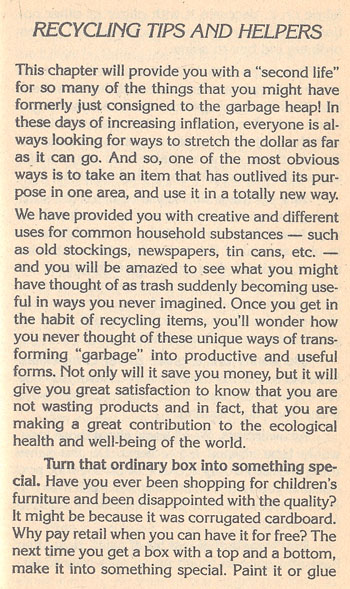 A few more excerpts from this chapter follow.
A few more excerpts from this chapter follow.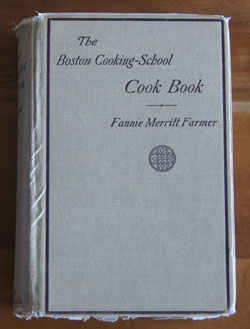 The Boston Cooking-School Cook Book is my second-oldest cookbook. It was published in 1906! I hold it in my hands in amazement. The pages are a little brittle, and some of them are falling out, but it’s in pretty good condition, considering. I obtained this book from the
The Boston Cooking-School Cook Book is my second-oldest cookbook. It was published in 1906! I hold it in my hands in amazement. The pages are a little brittle, and some of them are falling out, but it’s in pretty good condition, considering. I obtained this book from the 
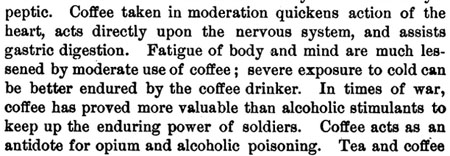
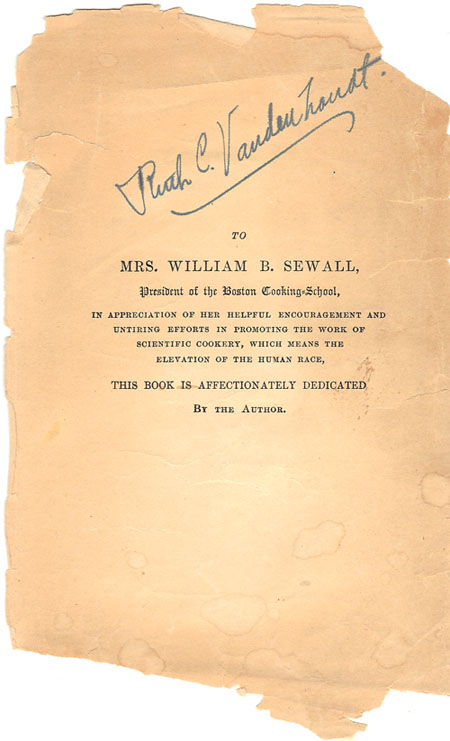
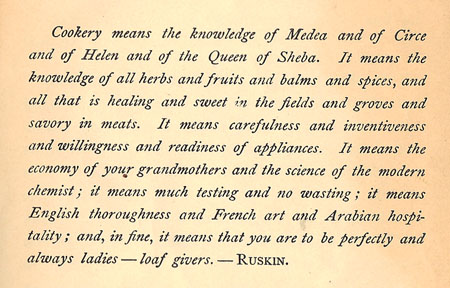

 I made them pretty much like the recipe, except I didn’t line the pan with paraffine paper, I simply sprayed with cooking spray (with flour in it). A “square” of Baker’s chocolate is an ounce of unsweetened baking chocolate in todays packaging. A “slow oven” is explained in my
I made them pretty much like the recipe, except I didn’t line the pan with paraffine paper, I simply sprayed with cooking spray (with flour in it). A “square” of Baker’s chocolate is an ounce of unsweetened baking chocolate in todays packaging. A “slow oven” is explained in my 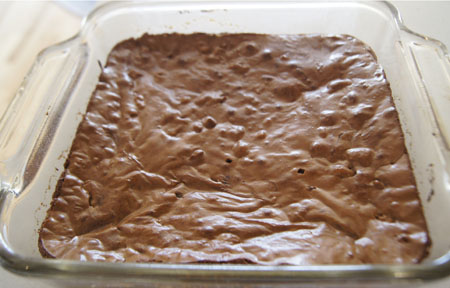 Yum!
Yum!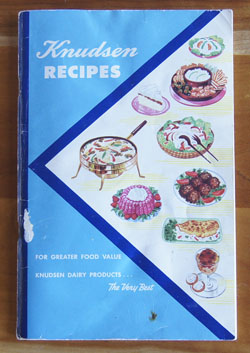 This is the second “Knudsen Recipes” cookbooklet that I have covered. I didn’t much like the recipes in the
This is the second “Knudsen Recipes” cookbooklet that I have covered. I didn’t much like the recipes in the  Facing the page of the male chemist is a photo of the cook (female, of course) using a Knudsen product. Note: “For the young bride whose kitchen ‘know how’ begins and ends with frying an egg . . . “. And this is good too: “Here you will find colorful photographs showing how to make foods more appetizing and table settings more attractive.”
Facing the page of the male chemist is a photo of the cook (female, of course) using a Knudsen product. Note: “For the young bride whose kitchen ‘know how’ begins and ends with frying an egg . . . “. And this is good too: “Here you will find colorful photographs showing how to make foods more appetizing and table settings more attractive.”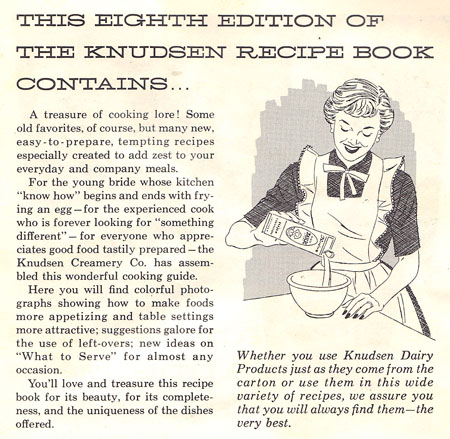


 The “Crab and Shrimp Bake” (below) is made with cooked shrimp “cut in bits’ and crab meat, cottage cheese, sour cream, celery and onion and green pepper, and potato chips. I don’t know, does it sound good to you? I do think I’d probably like the “Chicken-Noodle Mix”.
The “Crab and Shrimp Bake” (below) is made with cooked shrimp “cut in bits’ and crab meat, cottage cheese, sour cream, celery and onion and green pepper, and potato chips. I don’t know, does it sound good to you? I do think I’d probably like the “Chicken-Noodle Mix”.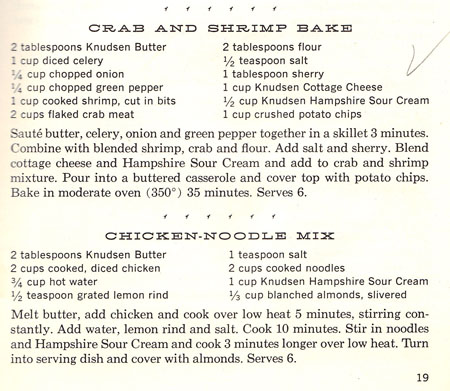

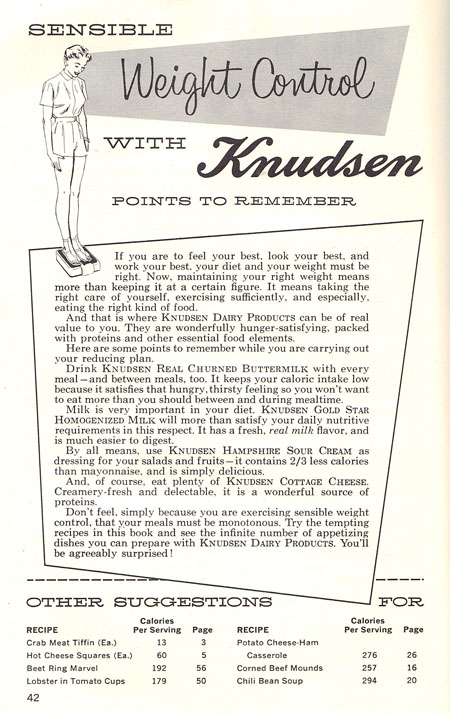
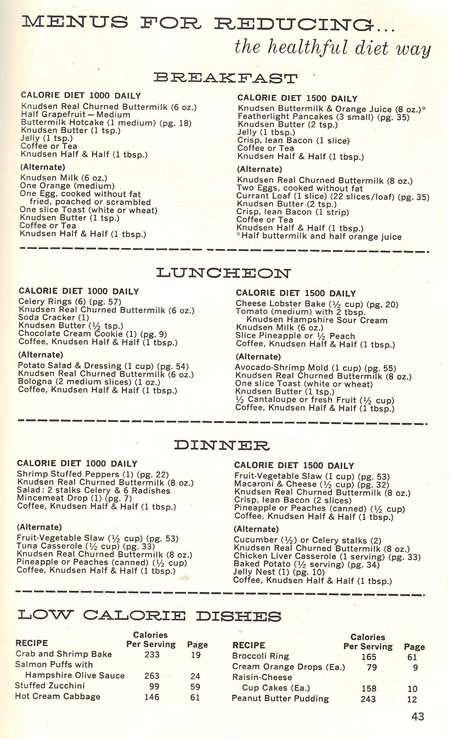 I like this excerpt below: “But first, you must learn the language of calories, a language anyone can pick up quickly.”
I like this excerpt below: “But first, you must learn the language of calories, a language anyone can pick up quickly.”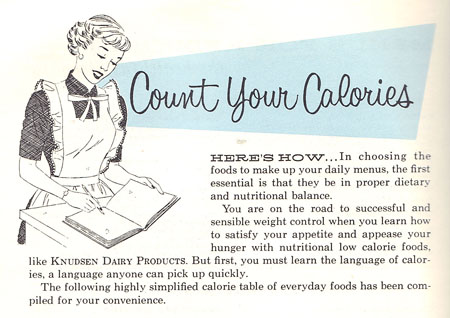
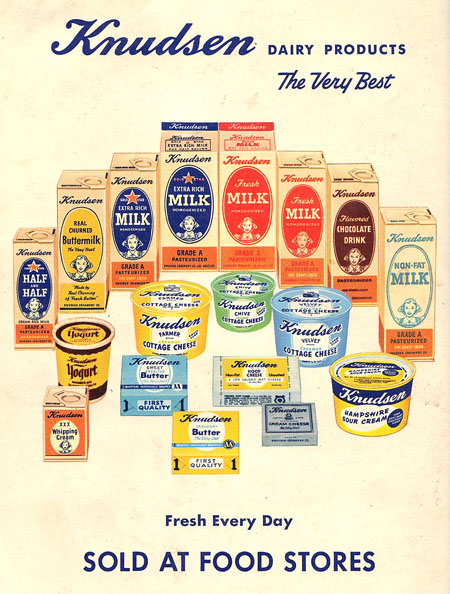


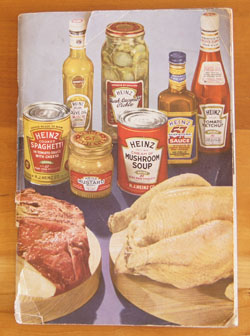 Wow, this is another vintage booket! I didn’t have the publication date – 1937 – entered in my cookbook database so I thought it was one of my mother’s 50s-era booklets. And I thought it was missing the cover. But I found the publication date when I carefully searched the booklet, and by comparison with photos online, I find this booklet is not missing the cover. Here it is laid open, with both front and back covers showing:
Wow, this is another vintage booket! I didn’t have the publication date – 1937 – entered in my cookbook database so I thought it was one of my mother’s 50s-era booklets. And I thought it was missing the cover. But I found the publication date when I carefully searched the booklet, and by comparison with photos online, I find this booklet is not missing the cover. Here it is laid open, with both front and back covers showing: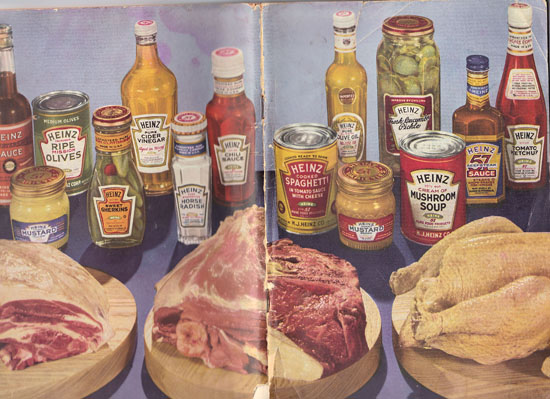
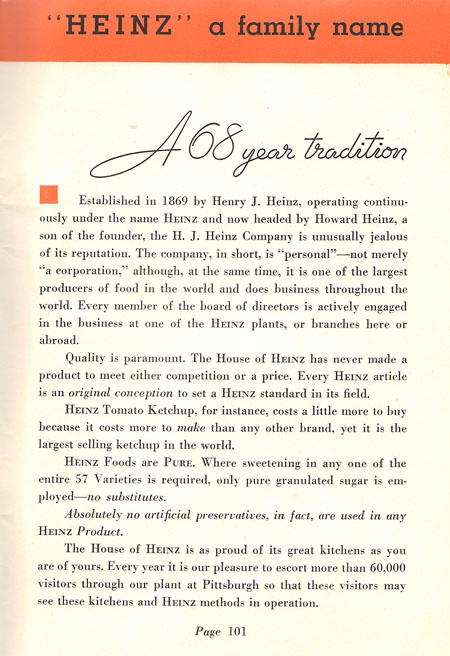
 A good proportion of the varieties are canned soups. The “cream of” varities are asparagus, celery, green pea, mushroom, oyster, spinach, and tomato soups. (I think their “cream of tomato” variety is what we now call canned “tomato soup”.) Other soups are chicken soups, clam chowder, turtle (!), onion, pepper pot, and vegatable beef. Only some of these soups are available today, and they are no longer Heinz brands.The above list also includes baked beans (several varieties), mincemeat, puddings, olives, cooked spaghetti and cooked macaroni, peanut butter, breakfast wheat, and jams. Most of items in the above list, except Heinz condiments: ketchup, chili sauce, steak sauce, mustard, and vinegar. (I only buy Heinz ketchup and chili sauce, and I keep them in my pantry at all times!)
A good proportion of the varieties are canned soups. The “cream of” varities are asparagus, celery, green pea, mushroom, oyster, spinach, and tomato soups. (I think their “cream of tomato” variety is what we now call canned “tomato soup”.) Other soups are chicken soups, clam chowder, turtle (!), onion, pepper pot, and vegatable beef. Only some of these soups are available today, and they are no longer Heinz brands.The above list also includes baked beans (several varieties), mincemeat, puddings, olives, cooked spaghetti and cooked macaroni, peanut butter, breakfast wheat, and jams. Most of items in the above list, except Heinz condiments: ketchup, chili sauce, steak sauce, mustard, and vinegar. (I only buy Heinz ketchup and chili sauce, and I keep them in my pantry at all times!)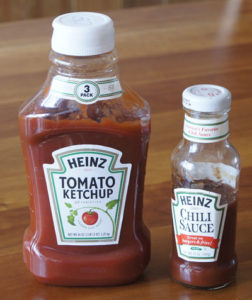
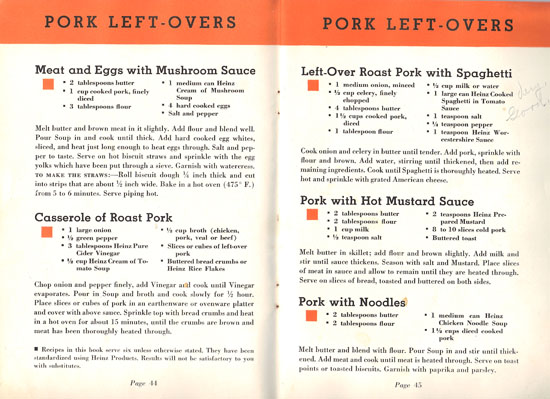

 I like the “Cocktail Sauce–No. 2”. This is how I usually make cocktail sauce, except I use lemon instead of vinegar (and I never measure anything!). I like to add a little Lea and Perkins Worcestershire sauce, a current Heinz brand, so I’ll add a few drops. I’m not sure “evaporated horseradish” is available; I’ll use prepared horseradish.
I like the “Cocktail Sauce–No. 2”. This is how I usually make cocktail sauce, except I use lemon instead of vinegar (and I never measure anything!). I like to add a little Lea and Perkins Worcestershire sauce, a current Heinz brand, so I’ll add a few drops. I’m not sure “evaporated horseradish” is available; I’ll use prepared horseradish.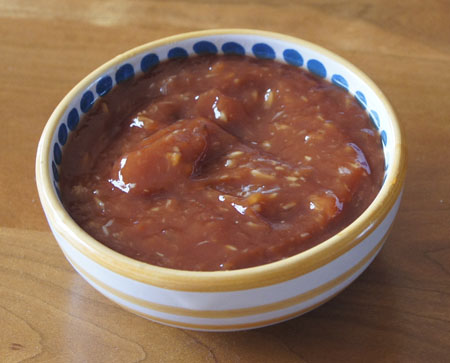
 My Whole Foods basket overflowing with fresh fruits and vegetables, I rolled towards a sample table last Thursday. The enthusiastic young man had laid out samples of yet another protein bar for the sports enthusiasts of Boulder. I was about to pass on by, but I heard the words “low glycemic index” . . . that stopped me.
My Whole Foods basket overflowing with fresh fruits and vegetables, I rolled towards a sample table last Thursday. The enthusiastic young man had laid out samples of yet another protein bar for the sports enthusiasts of Boulder. I was about to pass on by, but I heard the words “low glycemic index” . . . that stopped me.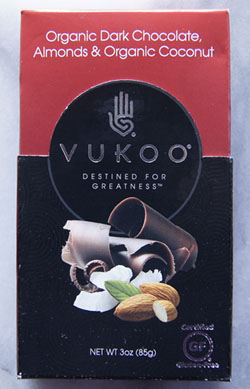 Little did that young man know that he was the inspiration for this week’s blog post.
Little did that young man know that he was the inspiration for this week’s blog post.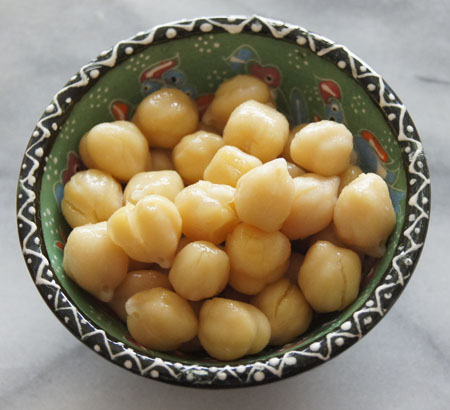 I will put these pretty beans in green salads and main dish salads (I have a great recipe for a Mediterranean salad). I can use them for hummus (I’ve made it many times before). They freeze well, so I froze several containers for later use. Garbanzo beans should be a healthy addition to our diet.
I will put these pretty beans in green salads and main dish salads (I have a great recipe for a Mediterranean salad). I can use them for hummus (I’ve made it many times before). They freeze well, so I froze several containers for later use. Garbanzo beans should be a healthy addition to our diet.
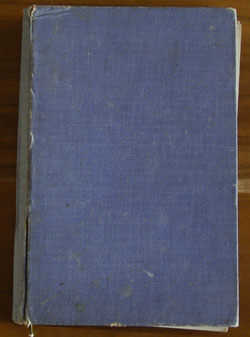
 As you can see, the pages are held in with a string tie. The front of each double-sided page is headed with “Borden’s Cooperative Housewives Recipes” and a color illustration. Several recipes follow, and then the bottom of the page has a can of Borden condensed milk on the left, a can of Borden’s evaporated milk on the left, and a saying, like “Every Menu Should Contain Milk or Milk Dishes”.
As you can see, the pages are held in with a string tie. The front of each double-sided page is headed with “Borden’s Cooperative Housewives Recipes” and a color illustration. Several recipes follow, and then the bottom of the page has a can of Borden condensed milk on the left, a can of Borden’s evaporated milk on the left, and a saying, like “Every Menu Should Contain Milk or Milk Dishes”.

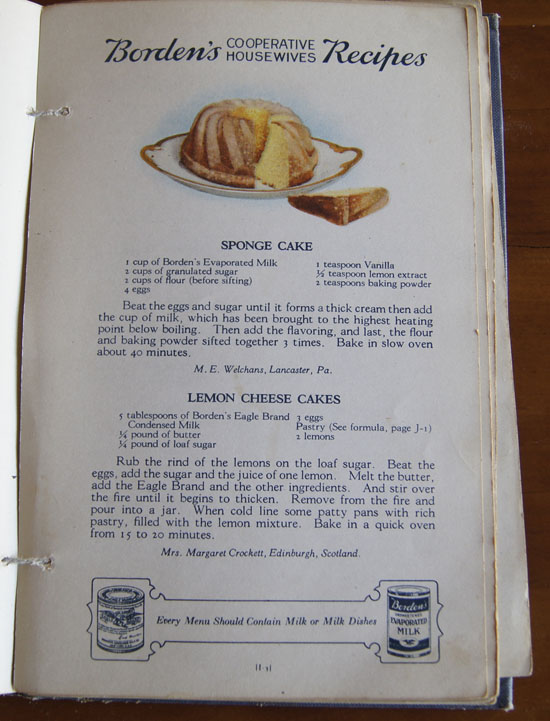
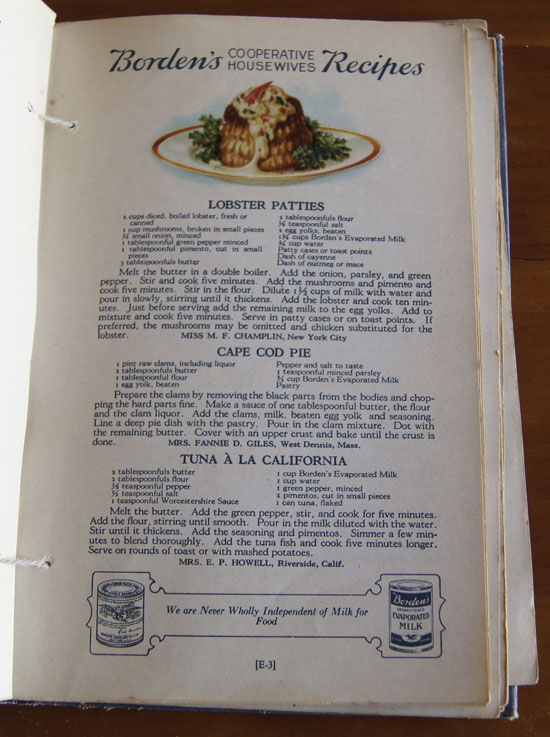
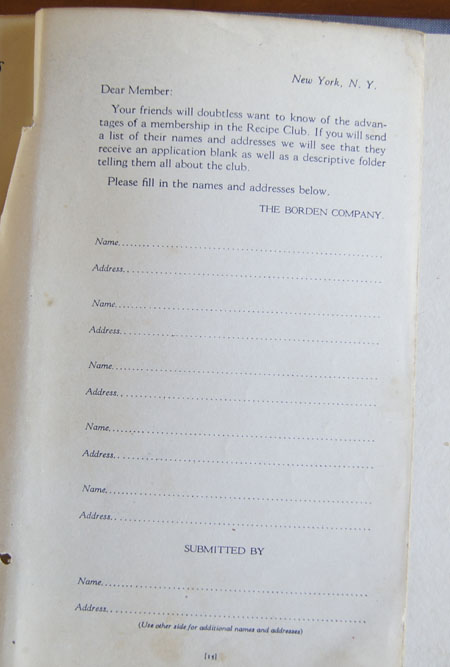
 The sticker on the MSU copy reads, “For delicious creamy coffee: Borden’s Eagle Brand Condensed Milk.” Perhaps the sticker on my copy fell off?
The sticker on the MSU copy reads, “For delicious creamy coffee: Borden’s Eagle Brand Condensed Milk.” Perhaps the sticker on my copy fell off?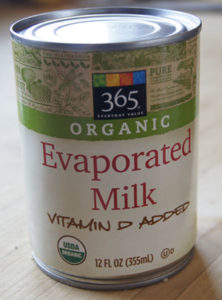 Evaporated and condensed milk as sold today
Evaporated and condensed milk as sold today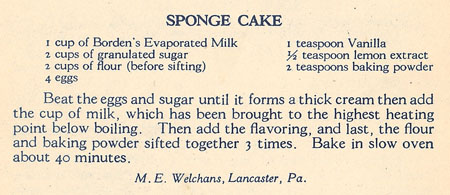 The photo of this cake (one of the photos earlier in this blog) show that it was baked in a bundt pan. I decide not to heat the evaporated milk to just below boiling (this is an unusual step in cake-baking). I guessed a slow oven to be 350˚ F.
The photo of this cake (one of the photos earlier in this blog) show that it was baked in a bundt pan. I decide not to heat the evaporated milk to just below boiling (this is an unusual step in cake-baking). I guessed a slow oven to be 350˚ F.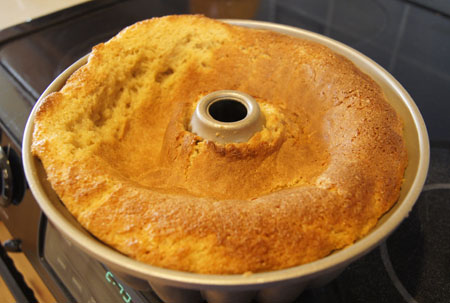 I was so disappointed! This is my planned dessert, and we had company. I showed it to my husband and he sympathized with me.
I was so disappointed! This is my planned dessert, and we had company. I showed it to my husband and he sympathized with me.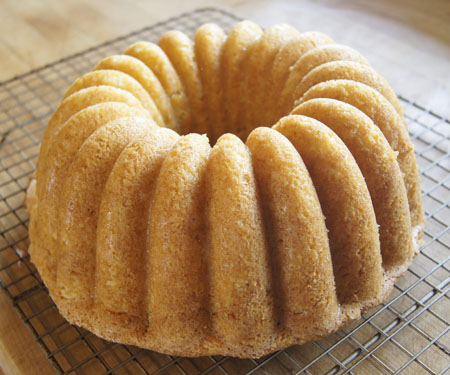 It’s beautiful!
It’s beautiful!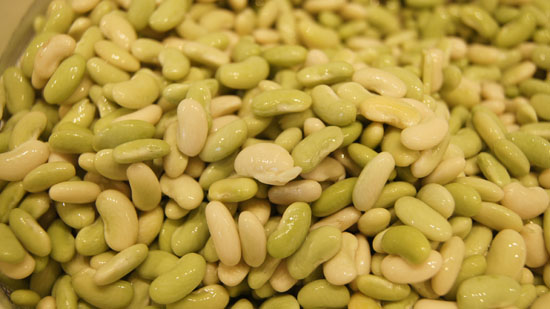 I found an (expensive) bag of heirloom flageolet beans at a little store called “
I found an (expensive) bag of heirloom flageolet beans at a little store called “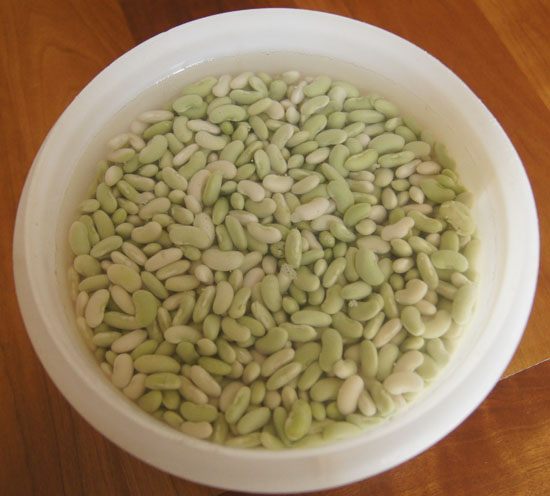


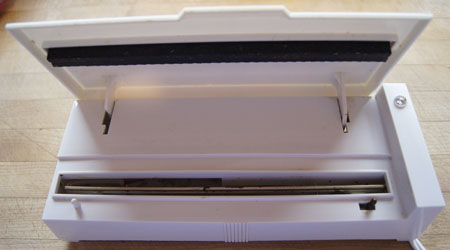 Note the two pegs in the above photo, the white one on the left and the black one on the right. Special bags, or “pouches”, were sold that had holes along the side to latch on to the bags. I have a small roll of this type of this bag material – as you can see in the photo below. See the little round hole in the bottom right corner of the photo?
Note the two pegs in the above photo, the white one on the left and the black one on the right. Special bags, or “pouches”, were sold that had holes along the side to latch on to the bags. I have a small roll of this type of this bag material – as you can see in the photo below. See the little round hole in the bottom right corner of the photo?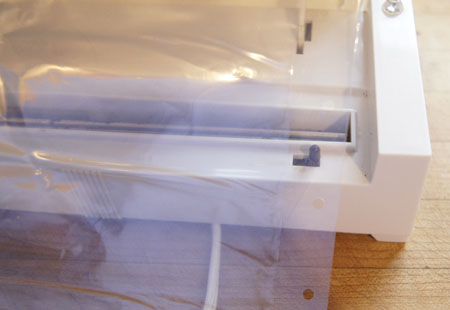

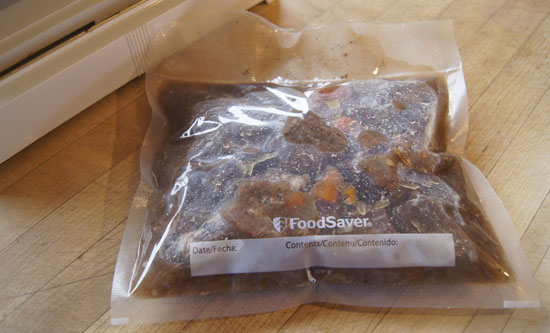 The filled bags are now in my freezer, ready for a couple quick meals.
The filled bags are now in my freezer, ready for a couple quick meals.